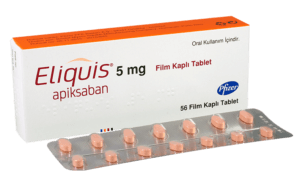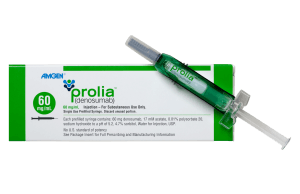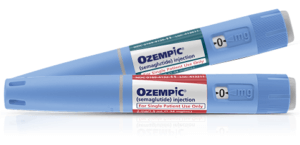
The presence of cellulite often appears as dimpled or uneven skin, primarily on the thighs, buttocks, and abdomen. It is not a medical issue but a result of fat pushing through the connective tissue beneath the skin. While it affects people of all body types, it is most common among women due to differences in fat distribution, skin structure, and hormonal fluctuations.
The visibility of cellulite is influenced by multiple factors, including genetics, age, lifestyle, and hormonal changes. It often becomes more noticeable with age as skin loses elasticity. While losing weight can reduce the severity of cellulite in some cases, it is not a guaranteed solution. Cellulite is not directly linked to body fat levels. Many slim people also experience it, but excess body fat increases the likelihood that the cellulite will start to overcome the skin’s strength.
The search for effective cellulite reduction methods has led to numerous treatments, including creams, massages, fat-dissolving injections, liposuction, laser therapies, and more. While some of these approaches offer temporary improvements, achieving long-term results often requires a combination of lifestyle changes and professional interventions.
Understanding cellulite is essential for setting realistic expectations about treatment outcomes. Though complete removal may not be possible, significant improvements can be achieved with tailored strategies.
Can you get rid of cellulite by losing fat?
Introduction
Losing fat can help reduce the visibility of cellulite, especially when combined with a healthy lifestyle. However, cellulite is not solely about fat. Factors like skin elasticity and connective tissue also play a role. Slim individuals may still have cellulite due to these other factors.
Will cellulite go away with fat loss?
Fat loss can reduce the appearance of cellulite, but it is not a guaranteed solution. Cellulite occurs when fat cells push against connective tissue beneath the skin, causing a dimpled appearance. Losing fat can decrease the pressure on connective tissue and improve skin texture, especially in areas with more pronounced cellulite. However, cellulite isn’t just about fat. Other factors like genetics, skin elasticity, hormonal changes, and connective tissue structure influence it.
For example, even after significant weight loss, someone with weak or inflexible connective tissue might still have visible cellulite. Additionally, rapid weight loss can sometimes worsen the appearance of cellulite due to skin sagging. To improve results, pairing weight loss with strategies like strength training, which builds muscle and tightens the skin, or skin-tightening treatments can be effective. Maintaining a balanced diet, staying hydrated, and adopting skincare routines that support collagen production can further enhance results.
Why am I skinny but have cellulite on my stomach?

Hormonal factors play a significant role. For example, estrogen can affect blood flow and collagen production, leading to weakened connective tissue and increased fat cell visibility. Genetics also influence skin thickness, elasticity, and fat distribution, which may predispose certain individuals to cellulite regardless of their weight.
Skin quality can also contribute. Thin skin or reduced collagen production may make cellulite more visible, especially in the abdominal area. Improving skin health through hydration, a nutrient-rich diet and collagen-boosting treatments can help reduce its appearance.
Can you realistically get rid of cellulite?
Completely eliminating cellulite is highly unlikely because it is a structural issue influenced by multiple factors, including genetics, hormones, and skin quality. However, significant improvements in its appearance are possible with the right combination of lifestyle changes and treatments. A realistic approach involves focusing on reducing its visibility rather than expecting total removal with radical treatments such as plastic surgery.
Lifestyle strategies like regular exercise, strength training, and a healthy diet can help reduce body fat, improve muscle tone, and support skin health. Minimally invasive treatments such as laser therapy utilizing infrared light, radiofrequency, and subcision can break down fibrous bands, stimulate collagen production, and smooth out the skin. These methods often deliver more noticeable and lasting results.
Consistency is key. While certain treatments may provide quick improvements, maintaining results often requires ongoing effort. Setting realistic expectations and combining various approaches tailored to individual needs can achieve smoother and tighter-toned skin while improving confidence and overall health.
How do you get rid of fat deposits on your legs?

Getting rid of fat deposits on the legs requires a combination of healthy lifestyle practices, targeted exercises, and sometimes professional treatments. Fat on the legs is often stubborn, which means reduction through exercise alone may not be effective. Instead, overall body fat loss is necessary, achieved by maintaining a calorie deficit through a balanced diet and regular physical activity.
Exercises such as squats, lunges, and step-ups target leg muscles, helping to tone and firm the area. Cardiovascular activities like running, cycling, or swimming can complement these efforts by burning calories and improving circulation. Additionally, strength training helps build lean muscle, which can improve the appearance of legs by tightening the skin and reducing fat deposits.
For individuals seeking faster results, non-invasive procedures like CoolSculpting, laser treatments, or fat-dissolving injections may help contour the legs. While these treatments can be effective, they work best with a healthy lifestyle to maintain results.
What is the best treatment for cellulite on the legs?
The best treatment for cellulite on the legs often depends on the individual’s skin type, the severity of cellulite, and personal preferences. A combination of professional treatments and at-home care typically yields the best results. These treatments target the fibrous bands beneath the skin, improve collagen production, and increase blood flow to the area, smoothing the skin’s surface. Topical creams containing ingredients like caffeine may also provide modest improvements by firming the skin. There are prescription creams that deliver retinol, such as Renova. Renova contains tretinoin and is a prescription topical retinoid that can help reduce the appearance of cellulite by thickening the skin and increasing collagen and elastin production. It must be remembered, though, that it’s important to use tretinoin consistently and long-term to see results.
For those seeking non-invasive methods, vacuum-assisted massage or acoustic wave therapy can temporarily improve circulation and reduce cellulite’s appearance.
Lifestyle changes, such as regular exercise and a nutrient-rich diet, support these treatments by improving skin health and reducing excess fat. Combining professional treatments with at-home efforts ensures longer-lasting and more noticeable improvements.
Is cellulite on legs reversible?
Cellulite on legs is not entirely reversible, but the right approach can significantly reduce its appearance. Regular exercise, particularly strength training, helps tone the muscles beneath the skin and improve circulation. Prescription creams such as Renova deliver a topical retinoid (typically prescribed to deliver 0.3 retinol) that can help improve the skin’s appearance by increasing collagen and elastin production. Dietary changes, including reducing processed foods and increasing hydration, can also promote healthier skin and reduce fluid retention, which exacerbates cellulite.
Professional treatments can achieve noticeable improvements, but maintenance is essential since cellulite may return over time due to aging or hormonal changes. A proactive combination of treatments and lifestyle adjustments is the best way to manage cellulite long-term.
Can cellulite go away with massage?
Introduction
Massage can temporarily improve the appearance of cellulite, but it does not eliminate it permanently. Techniques like lymphatic drainage and deep tissue massage increase blood flow and reduce fluid retention, which can make the skin look smoother and more even. Massage may also stimulate collagen production, improving skin elasticity over time.
However, the effects of massage are short-lived and typically require regular sessions to maintain visible improvements. For long-term results, massage is best combined with other cellulite treatments, such as exercise, a healthy diet, and professional therapies like laser or radiofrequency. While massage can be a helpful tool in reducing cellulite’s appearance, it should be viewed as part of a broader strategy rather than a standalone solution.
Does massaging cellulite help break it up?
Massaging cellulite does not physically break up the fat deposits or fibrous bands causing it, but it can improve its appearance. Massage techniques stimulate circulation, helping to move trapped fluids and improve lymphatic drainage, which can reduce the puffiness and uneven texture associated with cellulite.
Additionally, massage can enhance skin elasticity and promote collagen production, leading to firmer, smoother skin over time. While the effects are temporary, consistent massage sessions can lead to noticeable improvements when combined with other treatments and lifestyle changes. It’s important to note that massage alone will not eliminate cellulite but can be a valuable part of a comprehensive approach.
Does dry brushing help cellulite?
Dry brushing, a technique that involves brushing the skin with a stiff-bristled brush in circular motions, is often touted as a cellulite remedy. While it doesn’t directly reduce cellulite, it can improve skin texture and temporarily reduce its appearance. Dry brushing stimulates circulation and exfoliates the skin, promoting a smoother and more toned look.
The technique may also enhance lymphatic drainage, helping to reduce fluid retention, which can contribute to the lumpy appearance of cellulite. However, the effects of dry brushing are short-lived, and it must be done consistently to maintain results. While not a cure, dry brushing can be a helpful addition to a broader cellulite reduction routine.
Does fat dissolving leave saggy skin?
Fat-dissolving treatments, such as injections of deoxycholic acid, are effective for reducing localized fat deposits, but they can sometimes lead to saggy skin, especially in areas where the skin’s elasticity is poor. When fat is removed, the skin above may not always contract fully, leaving a loose appearance.
To minimize sagging, combining fat-dissolving treatments with skin-tightening procedures is recommended. These treatments stimulate collagen production, helping to firm the skin. Maintaining a healthy lifestyle and gradually losing fat can also reduce the likelihood of sagging. Consulting a qualified professional is essential to create a treatment plan tailored to your skin’s needs.
How many fat-dissolving injections do I need?
The number of fat-dissolving injections required depends on the size of the treatment area, the amount of fat being targeted, and individual response to the procedure. Most patients need 2-4 sessions spaced several weeks apart to achieve desired results. Each session involves multiple injections into the targeted area.
During your consultation, your provider will assess your specific needs and develop a customized plan. While results are not immediate—taking a few weeks as the body metabolizes the dissolved fat—consistent sessions can yield significant improvements. A maintenance plan may also be recommended to sustain long-term results.
How long does fat-dissolving last?
Fat-dissolving treatments provide long-lasting results if a healthy lifestyle is maintained. The body permanently eliminates the destroyed fat cells, meaning they cannot regrow. However, remaining fat cells in the treated area can still expand with weight gain.
To preserve results, it is important to follow a balanced diet and engage in regular exercise. While the results are durable, some individuals may require touch-up treatments if additional fat deposits form or skin elasticity changes over time. Discussing maintenance options with your provider can help you sustain the benefits of the treatment.
Will lipo get rid of cellulite?
Liposuction, or lipo, is a popular cosmetic procedure designed to remove localized fat deposits and improve body contours. While it is highly effective at eliminating stubborn fat, it is not typically recommended as a primary treatment for cellulite. This is because cellulite is not caused solely by excess fat; it results from a complex interaction between fat cells, fibrous connective tissue, and the skin’s elasticity.
Cellulite appears when fat cells push against the connective tissue beneath the skin, causing dimpling or a “cottage cheese” appearance. Liposuction targets deeper fat layers, while cellulite involves fat closer to the skin’s surface. In some cases, lipo can even worsen cellulite by creating uneven skin texture or accentuating sagging if the skin’s elasticity is poor.
For those seeking to address cellulite, alternative treatments are often more effective. These methods target the structural causes of cellulite, such as the fibrous bands pulling on the skin. While combining liposuction with skin-tightening treatments may improve overall results, it is important to have realistic expectations. Consulting with a qualified healthcare provider can help determine the best approach for achieving smoother, firmer skin tailored to individual needs.
Can cellulite be removed permanently?
Cellulite cannot be removed permanently due to its complex structural causes involving fat, connective tissue, and skin elasticity. However, physical treatments can significantly improve its appearance for months or years.
These methods target the underlying causes of cellulite by breaking down fibrous bands, stimulating collagen production, and tightening the skin. Lifestyle changes, including exercise, a healthy diet, and staying hydrated, can complement these treatments and prevent cellulite from worsening. While permanent removal isn’t possible, combining effective strategies can help maintain smoother, firmer skin for the long term.
What is the longest-lasting treatment for cellulite?
Laser therapy, subcision, and radiofrequency are regarded as being the most effective, non-invasive, and longest-lasting cellulite treatments. Subcision involves releasing the fibrous bands beneath the skin, providing smoother contours for up to two years. Laser therapies and radiofrequency treatments work by stimulating collagen production, which tightens the skin and reduces cellulite’s visibility for six months to a year or longer.
While these treatments deliver lasting results, maintenance sessions are often needed as the effects diminish over time due to aging and other factors. A combination of professional treatments and lifestyle adjustments ensures the most durable outcomes.
Is there any treatment that really works for cellulite?
Several treatments can significantly reduce the appearance of cellulite, but no single method completely eliminates it. Effective options include those that address the structure of the fibrous bands improve collagen production, and tighten the skin.
Non-invasive treatments like acoustic wave therapy and topical creams with caffeine or retinol may also provide modest improvements. However, the best results often come from a combined approach, incorporating professional treatments, exercise, a healthy diet, and good skin care. While no method is perfect, consistent effort can lead to smoother and firmer skin over time.
















